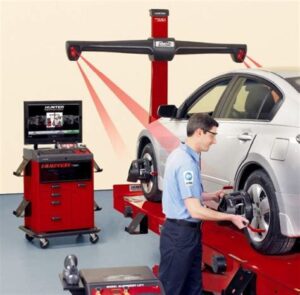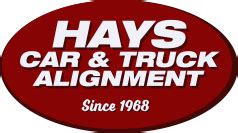Maintaining your vehicle’s alignment is crucial for ensuring a smooth ride and optimal handling. If you’ve ever wondered, How long does a car alignment take? you’re not alone. Proper alignment not only enhances your vehicle’s performance but also contributes to tire longevity and fuel efficiency. In this article, we’ll delve into the significance of car alignment and why it shouldn’t be overlooked. Additionally, we’ll explore various factors that impact the duration of alignment services, typical timeframes, and key indicators that your vehicle may need an alignment. With a deeper understanding of the process, you can better appreciate the importance of timely maintenance, ultimately saving time and money in the long run. Let’s get started on your journey to a well-aligned vehicle!
Understanding Car Alignment: Why It’s Important For Your Vehicle
Car alignment is a crucial aspect of vehicle maintenance that involves adjusting the angles of the wheels to ensure that they are perpendicular to the ground and parallel to each other. Proper alignment is essential for several reasons:
Neglecting car alignment can lead to various complications, such as uneven tire wear, difficulty in steering, and even suspension issues. To prevent these problems and maintain the performance of your vehicle, regular alignment checks are recommended, especially after hitting potholes or curbs.
Factors That Affect Car Alignment Duration and Timing
When it comes to car alignment, the time required for the service can vary significantly based on several factors. Understanding these determinants can help you anticipate how long the process might take and why certain elements can extend or shorten the duration of your appointment.
- Type of Vehicle: Different vehicles have varying complexity in their alignment systems. Larger vehicles, such as SUVs and trucks, may require more time compared to standard sedans due to their size and suspension systems.
- Alignment Procedure: The specific type of alignment needed—such as a two-wheel or four-wheel alignment—will directly influence the duration. A four-wheel alignment generally takes longer because it involves adjusting all four wheels instead of just the front two.
- Condition of Suspension Components: If there are pre-existing issues with the suspension system, such as worn-out bushings or tie rods, these need to be addressed before or during the alignment process. This can extend the overall time needed for service.
- Shop Efficiency: The proficiency of the service center also plays a key role. Well-equipped and experienced mechanics can often complete car alignment faster than those in less efficient shops.
- Schedule and Queue: The number of vehicles on the shop’s schedule can affect how quickly your alignment can be performed. Busy shops may require you to wait longer for your appointment or take longer due to the workload.
- Additional Services: If you’re combining your alignment with other services like tire rotation or brake checks, this will also increase the time you should expect to spend at the shop.
Being aware of these factors can help you better plan your visit and minimize inconvenience while ensuring that your vehicle receives the necessary attention for optimal performance. Always discuss with your technician to understand what to expect for your specific situation when addressing car alignment needs.
Typical Timeframes for Car Alignment Services Explained
When it comes to car alignment, understanding the typical timeframes for service can help you better plan for your vehicle’s maintenance. Generally, a standard car alignment service can take anywhere from 30 minutes to 1 hour. The duration may vary based on several factors, such as the type of alignment being performed, the technician’s experience, and the condition of the vehicle.
Here’s a breakdown of what you can expect during typical car alignment services:
- Two-Wheel Alignment: Often takes about 30 to 45 minutes. This service is typically required for vehicles with rear-wheel drive.
- Four-Wheel Alignment: Usually requires about 45 minutes to 1 hour. This is common for all-wheel drive or four-wheel drive vehicles, as all four wheels must be adjusted.
- Cost and Extras: If your vehicle exhibits additional issues like worn-out suspension parts or requires new tires, the time may increase for repair, impacting overall alignment duration.
Always consult with your service provider to get an accurate estimate based on your specific vehicle needs. Regularly scheduled car alignment helps prolong tire life and improve driving safety, making it an essential part of vehicle maintenance.
Signs Your Vehicle Needs Car Alignment and How It Saves Time
Recognizing the signs your vehicle needs car alignment is crucial for maintaining optimal driving conditions and ensuring your vehicle operates safely. Addressing alignment issues promptly can save you time and money in the long run. Here are some key indicators that suggest your car may be misaligned:
- Uneven Tire Wear: If you notice that your tires are wearing down unevenly—such as one side being more worn than the other—it’s a strong indication of misalignment.
- Veering or Pulling: If your vehicle pulls to one side while driving straight, this might indicate that your wheels are not aligned correctly.
- Steering Wheel Off-Center: A crooked steering wheel when driving straight is a common sign that your car alignment is off.
- Vibration in the Steering Wheel: If your steering wheel vibrates while driving, it can be a symptom of misalignment or imbalance in the wheels.
- Noisy Tires: A loud noise while driving—often caused by uneven tread wear—can also be a sign that your alignment needs adjusting.
Taking action at the early signs of misalignment not only enhances the driving experience but also extends the life of your tires and suspension components. Maintaining proper car alignment helps in:
| Benefits | Time Saved |
|---|---|
| Improved Fuel Efficiency | Less frequent refueling stops |
| Enhanced Vehicle Stability | Fewer trips to the repair shop |
| Extended Tire Life | Lower replacement frequency |
| Smoother Driving Experience | Fewer distractions and fatigue |
By addressing car alignment issues when they arise, drivers can enjoy a more efficient and safer vehicle, saving valuable time and resources in the process.
What to Expect During a Car Alignment Appointment
During a car alignment appointment, there are several key steps that technicians follow to ensure your vehicle is properly aligned. Understanding what happens during the process can help you feel more comfortable and informed.
First, when you arrive, the technician will conduct a thorough inspection of your vehicle. They will examine the tires, suspension, and steering components to identify any underlying issues that might affect car alignment. You’ll likely be asked about any symptoms you’ve noticed, such as uneven tire wear or drifting to one side.
Next, the technician will use specialized equipment to measure the angles of the wheels. This equipment includes alignment machines that provide precise measurements of the toe, camber, and caster angles. These readings will indicate whether your vehicle is within the manufacturer’s specifications for car alignment.
If any adjustments are necessary, the technician will make the required changes using tools to realign the wheels. This process usually involves loosening and tightening various suspension components, which they will then recheck to ensure everything is set correctly.
After the realignment, a test drive may be conducted. This step helps confirm that the vehicle handles properly and that the issues prompting the appointment have been resolved.
Finally, you can expect to receive a report detailing the alignment specifications before and after the service. This documentation will show you the adjustments made and can serve as a reference for future maintenance, ensuring your vehicle maintains optimal performance and safety.
By knowing what to expect during your car alignment appointment, you can ensure that your vehicle receives the best care and that you leave satisfied with the service provided.
Frequently Asked Questions
What is car alignment?
Car alignment refers to the adjustment of a vehicle’s suspension system to ensure that the wheels are set to the optimal position, maximizing handling, tire wear, and overall safety.
How often should I get my car aligned?
It is generally recommended to get your car aligned every 6,000 miles or at least once a year, but you should also consider having it checked if you notice unusual wear on your tires or if you hit a significant pothole.
How long does a car alignment take?
A typical car alignment can take anywhere from 30 minutes to an hour, depending on the shop, the complexity of the alignment, and any additional work that might be needed.
What are the signs that my car needs an alignment?
Signs that you may need a car alignment include uneven tire wear, your steering wheel being off-center, pulling to one side while driving, or a vibration in the steering wheel.
Can I still drive my car if it needs an alignment?
While you can drive a car that needs an alignment, it’s not advisable for long periods as it can lead to further tire wear, reduced fuel efficiency, and compromised vehicle handling.
Is a car alignment the same as balancing the tires?
No, car alignment and tire balancing are different. Alignment adjusts the angles of the wheels, while balancing involves evenly distributing the weight of the tire and wheel assembly to avoid vibrations while driving.
How does improper alignment affect my vehicle?
Improper alignment can lead to premature tire wear, decreased fuel efficiency, and poor handling, making your vehicle less safe and more costly to maintain over time.





